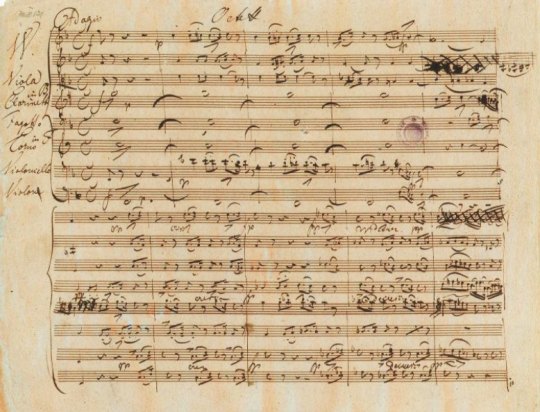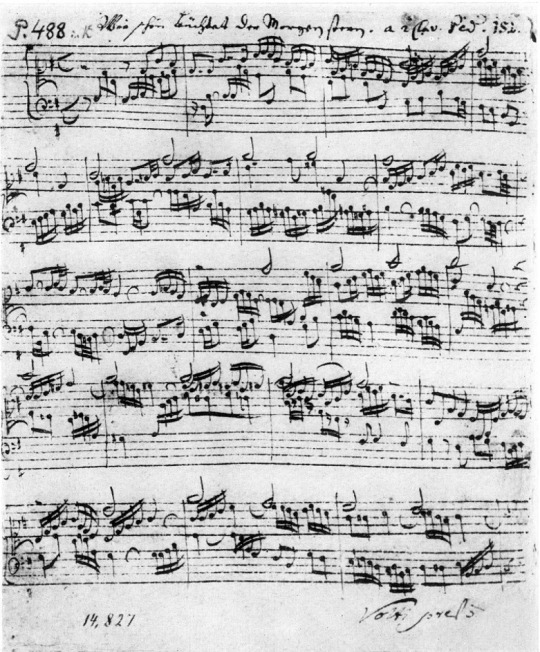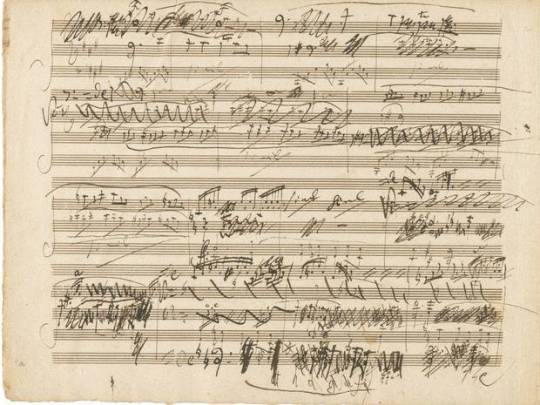#joseph leopold eybler
Text










Partituras manuscritas: Carl María Von Weber, Franz Schubert, J. S. Bach - Johannes Brahms - Joseph Hayden - Joseph Leopold Eybler - Ludwig V. Beethoven -Richard Wagner - Schumann - Richard Strauss
#Carl María Von Weber#Franz Schubert#J. S. Bach#johannes brahms#joseph haydn#joseph leopold eybler#ludwig van beethoven#richard wagner#karl schumann#richard strauss
65 notes
·
View notes
Video
youtube
Joseph Leopold Eybler (1765-1846) - Clarinet Concerto in B-flat major (1798)
Mov.I: Allegro maestoso 00:00 Mov.II: Adagio 11:22 Mov.III: Rondo alla turca: Allegro 17:04
Clarinet: Dieter Klöcker Orchestra: English Chamber Orchestra
2 notes
·
View notes
Video
youtube
Joseph Leopold Eybler - Clarinet Concerto in B-flat major (1798)
0 notes
Text
Mozart handbuch inhaltsverzeichnis englisch
MOZART HANDBUCH INHALTSVERZEICHNIS ENGLISCH >> DOWNLOAD LINK
vk.cc/c7jKeU
MOZART HANDBUCH INHALTSVERZEICHNIS ENGLISCH >> READ ONLINE
bit.do/fSmfG
mozart alterwolfgang amadeus mozart
mozart werke
mozart beruf
mozart lebenslauf kurz
mozart steckbrief
leopold mozart
salieri mozart
Mozart, Wolfgang Amadeus Deutsch, Englisch Die Oper „Le nozze di Figaro“ von Wolfgang Amadeus Mozart und Lorenzo Da Ponte, die ihre Uraufführung am Oper in 2 Akten Wolfgang Amadeus Mozart Ladenpreis à Band 20 Ngr . Volftändigstes englisch.de u tp ches deutsch - englisches und Hand wörterb u ch . Elegant gebunden . negabe I : 16 Thlr . Ansgabe II : 8 Thlr . Inhalt [ allen Buchhandlungen : Englisch - deutsches und deutsch- englisches WörterbuchGebunden 1 Thaler 25 Ngr . - Englisch - französisch - deutsches Hülfsbu ch . Ein unentbehrlicher Begleiter für Reisende und nothwendiges Handbuch zur den Geheimbünden einen edlern und bessern Inhalt zu geben ; Mozart und deffen Name allerdings troß des von ganz englisch aussähe , doch nicht so Mozart, Wolfgang Amadeus. Requiem KV 626. Mozarts Fragment mit den Ergänzungen von Joseph Eybler und Franz Xaver Süßmayr Deutsch, Englisch. Produktart. Wolfgang Amadeus Mozart, der überwiegend mit Wolfgang Amadé Mozart unterschrieb (* 27. Jänner 1756 in Salzburg; † 5. Dezember 1791 in Wien),
https://jideromitep.tumblr.com/post/692748227754311680/mercator-1086-bedienungsanleitung-spidem, https://jideromitep.tumblr.com/post/692748227754311680/mercator-1086-bedienungsanleitung-spidem, https://jideromitep.tumblr.com/post/692748227754311680/mercator-1086-bedienungsanleitung-spidem, https://pavikotefepi.tumblr.com/post/692748146215911424/mx-20-hott-handbuch-webasto, https://hefexiradaho.tumblr.com/post/692748149055520768/nch-536mw-bedienungsanleitung-sony.
0 notes
Audio
Wolfgang Amadeus Mozart - Requiem by musicoloco
wolfgang amadeus mozart - requiem es una pista La Misa de Réquiem en re menor, K. 626, es una obra de Wolfgang Amadeus Mozart basada en los textos latinos para el Réquiem, es decir, el acto litúrgico católico celebrado tras el fallecimiento de una persona; se trata de la decimonovena y última misa escrita por Mozart. Mozart murió antes de terminarla, en 1791. En junio de 1791, Mozart ofreció en Viena uno de sus últimos conciertos públicos; tocó el Concierto para piano n.º 27 (KV 595). Su último hijo, Franz Xaver Wolfgang, nació el 26 de julio. Pocos días antes se presentó en su casa un desconocido, vestido de gris, que rehusó identificarse y que encargó a Mozart la composición de un réquiem. Le dio un adelanto y quedaron en que regresaría en un mes. Pero el compositor fue llamado desde Praga para escribir la ópera La clemencia de Tito, para festejar la coronación de Leopoldo II. Cuando subía con su esposa al carruaje que los llevaría a esa ciudad, el desconocido se presentó otra vez, preguntando por su encargo. Esto sobrecogió al compositor. Más tarde se supo que aquel sombrío personaje (al parecer, llamado Franz Anton Leitgeb) era un enviado del conde Franz von Walsegg, músico aficionado cuya esposa había fallecido. El viudo deseaba que Mozart compusiese la misa de réquiem para los funerales de su mujer, pero quería hacer creer a los demás que la obra era suya y por eso permanecía en el anonimato. Según la leyenda, Mozart, obsesionado con la idea de la muerte, desde la de su padre, debilitado por la fatiga y la enfermedad, muy sensible a lo sobrenatural por su vinculación con la francmasonería[cita requerida] e impresionado por el aspecto del enviado, terminó por creer que éste era un mensajero del Destino y que el réquiem que iba a componer sería para su propio funeral. Mozart, al morir, consiguió terminar tan solo tres secciones con el coro y órgano completo: Introitus, Kyrie y Dies Irae. Del resto de la Secuencia dejó las partes instrumentales, el coro, voces solistas y el cifrado del bajo y órgano incompletos, además de anotaciones para su discípulo Franz Xaver Süssmayr. También había indicaciones instrumentales y corales en el Domine Jesu y en el Agnus Dei. No había dejado nada escrito para el Sanctus ni el Communio. Aunque en un principio Constanze, su viuda, pidió al músico de la Corte Joseph Leopold Eybler que terminase el Réquiem, fue su discípulo Süssmayer quien lo acabó (siguiendo las directrices de Mozart), completando las partes faltantes de la instrumentación, agregando música en donde faltaba y componiendo íntegramente el Sanctus. Para el Communio, simplemente utilizó los temas del Introito y el Kyrie, a manera de reexposición, para darle cierta coherencia a la obra. Una de las principales influencias de esta obra puede hallarse en el Réquiem de Michael Haydn compuesto en el año 1771 para la muerte del arzobispo de Salzburgo S. C. Schrattenbach. Aunque al parecer se interpretaron extractos del Réquiem en una misa en memoria de Mozart celebrada el 10 de diciembre de 1791, el estreno de la obra completa se produjo en Viena el 2 de enero de 1793 en un concierto en beneficio de la viuda del músico austríaco, (Constanze Weber). Fue interpretado de nuevo el 14 de diciembre de 1793, durante la misa que conmemoraba la muerte de la esposa del conde Walsegg y bajo la dirección del propio conde. Después de esta interpretación, el conde Walsseg realizó una reducción para quinteto de cuerda, pero la obra no volvió a interpretarse bajo su patrocinio.
1 note
·
View note
Text
Vox Satanae - Episode 488: The Classical, Part II - Week of September 07, 2020
Vox Satanae – Episode 488: The Classical, Part 2 – Week of September 07, 2020

Vox Satanae – Episode 488 – 143 Minutes – Week of September 07, 2020
The Classical – Part II
This week we hear works by Giovanni Battista Viotti, Franz Ignaz Danzi, Joseph Leopold Eybler, Franz Xaver Süssmayr, Ludwig van Beethoven, and Mauro Giuliani.
Stream Vox Satanae Episode 488.
Download Vox Satanae Episode 488.
View On WordPress
8 notes
·
View notes
Text
a fav piece for each key
tagged by @five-flats
note: I don’t have a favourite piece for all 24 keys, so I’ll just list the keys that I do have favourite pieces for.
C major: Symphony in C major, “Sinfonia Comista” - Vanhal
C minor:
Requiem in C minor - Karl Ditters von Dittersdorf
Requiem in C minor - Luigi Cherubini
G major: Sonatina Op. 36 No. 5 in G major - Muzio Clementi
G minor: Symphony No. 6 in G minor, Op. 6 - Johann Christian Bach
D major:
Concerto for Horn, Timpani, and Strings - F. X. Pokorný
Symphony No. 32 in D major, P. 23: MH 420 - Michael Haydn
Organ Concerto in D major - František Xaver Brixi
Symphony in D major, Op. 36 - Paul Wranitzky
Piano Concerto No. 26 in D major “Coronation” - Wolfgang Amadeus Mozart
D minor:
Mozart’s Requiem
Nelson Mass - Joseph Haydn
Piano Concerto No. 1 in D minor - Friedrich Kalkbrenner
Symphony No. 29 in D minor, P. 20 - Michael Haydn
Symphony In D minor - Georg Joseph Vogler
A major: Piano Concerto No. 3 in A major - Louis Ferdinand Hérold
A minor: Symphony in A minor - Vanhal
E major:
Symphony No. 12 - Joseph Haydn
Symphony No. 7 in E major, P. 5 - Michael Haydn
Piano Concerto No. 4 in E major, Op. 110 “Les Adieux” - Hummel
Overture to a Midsummer Night’s Dream - Mendelssohn
E minor: Mendelssohn Violin Concerto
B minor: Piano Concerto No. 3 in B minor, Op. 89 - Hummel
F-sharp minor: Joseph Haydn’s Symphony 45
D-flat major: Raindrop Prelude - Chopin
C-sharp minor: Nocturne No. 20 in C-sharp minor - Chopin
A-flat major: Impromptu Op. 90 No. 4 - Schubert
E-flat major:
Concerto for two clarinets, Op. 35 - František Kramář Krommer
Clarinet Concerto in E-flat major, Op. 76 - Saverio Mercadante
B-flat major: Clarinet Concerto in B-flat major - Joseph Leopold Eybler
B-flat minor: Nocturne Op. 9 No. 1 - Chopin
F major:
Oboe Concerto No. 1 and No. 2 - František Kramář Krommer
Symphony No. 23, P. 14: MH 284 - Michael Haydn
Symphony No. 31, P. 22: MH 405 - Michael Haydn
Spiegel im Spiegel - Arvo Pärt
Horn Concerto No. 5 in F major - Giovanni Punto
F minor:
Clarinet Concerto No. 2 in F minor, Op. 5 - Bernhard Henrik Crusell
Dies Irae from Requiem in F minor, Op. 146 - Franz Paul Lachner
Piano Concerto in F minor - Adolf von Henselt
Piano Concerto No. 4 and No. 5 - William Sterndale Bennett
Overture No. 10 in F minor, Op. 142 - Johann Wenzel Kalliwoda
3 notes
·
View notes
Text
Review of “Beethoven: String Quartets, Op. 18, Nos. 4-6.” Eybler Quartet. CORO Connections COR16174

It's probably best to start by reminding you that the Eybler Quartet is a unique group of musicians who play historically informed performances on period instruments. Their Web site describes them as coming "together in late 2004 to explore the works of the first century of the string quartet, with a healthy attention to lesser known composers such as their namesake, Joseph Leopold Edler von Eybler. The group plays on instruments appropriate to the period of the music it performs. Violinist Julia Wedman and violist Patrick G. Jordan are members of Tafelmusik Baroque Orchestra; violinist Aisslinn Nosky is concertmaster of the Handel and Haydn Society and Principal Guest Conductor of the Niagara Symphony Orchestra; Aisslinn and Julia are also members of I FURIOSI Baroque Ensemble. Cellist Margaret Gay is much in demand as both a modern and period instrument player. The group brings a unique combination of talents and skills: years of collective experience as chamber musicians, technical prowess, experience in period instrument performance and an unquenchable passion for the repertoire."
As of this album, the Eybler Quartet has six albums to their credit, mostly music of Haydn, Mozart, Vanhal, Backofen, and their namesake, the Austrian composer and conductor Joseph Eybler (1765-1846). Here, the Eybler ensemble present volume two of Beethoven's String Quartets, Op. 18, Nos. 4-6, having already done a splendid job with Nos. 1-3. As I said about the group before, if you like chamber music and you like Beethoven, there's plenty of both around, but to hear these early Beethoven quartets played in something approaching what Beethoven himself might have heard (which, given his deteriorating hearing isn't saying a lot), the Eybler group is hard to beat.
To read the full review, click here:
https://classicalcandor.blogspot.com/2019/06/beethoven-string-quartets-op-18-nos-4-6.html
John J. Puccio, Classical Candor
#Classical Music#Classical Music Reviews#Classical Music Albums#Classical Music Album Reviews#Music#Music Reviews#Music Albums#Music Album Reviews#Beethoven#String Quartets
0 notes
Photo

Seven sad pieces of classical music to lift your mood
By Jordan Smith - Jul 30, 2016
We recently reported on new research suggesting that sad pieces of classical music frequently had the effect of improving people’s moods. So, we thought we’d help you along with some suggestions of sombre sound to put on your playlist.
J.S. Bach, Come, Sweet Death
The title alone makes clear that this won’t be a cheery work. Bach managed to express through the melody the desire for death and world-weariness. He contributed the song to a book of songs published by Georg Christian Schemelli in 1736. It has been reworked a number of times since, including in this recording by Leopold Stokowski. Stokowski set the melody for strings, before the orchestra joins in.
Wolfgang Amadeus Mozart, Requiem Mass in D minor
Mozart left this work incomplete on his death on 5 December, 1791. Everyone knows it from the famous scene in “Amadeus,” where the genious rushes to compose the final sections on his deathbed. In reality, only the first movement was complete in full. Although indications parts of the remaining sections had been made by Mozart, it required the work of Joseph von Eybler and Franz Xaver Süssmayr to finish it.
Ludwig van Beethoven, String Quartet No. 14 in C minor
This was one of Beethoven’s last works, written when the composer was completely deaf. A sombre tone is struck in the very first notes of the performance.
Johannes Brahms, Horn Trio in E flat major
A feeling of melancholy hangs over this piece from the outset, as the violin wails and horn mournfully sounds. Brahms composed this piece in the wake of his mother’s death. He wrote it with the natural horn or Waldhorn in mind, rather than the modern valve horn.
Ruggero Leoncavallo, Vesti la giubba
This famous aria comes at the end of the first act in Leoncavallo’s opera Pagliacci. It takes place as Canio discovers his wife’s infidelity, yet is forced to ignore it as he prepares to play the role of Pagliacci the clown. Here it is sung by Luciano Pavarotti.
Dmitri Shostakovich, Symphony No. 5
Dmitri Shostakovich composed his fifth symphony, in D minor, during several months in 1937. This helps account for its sad and foreboding tones, since 1937 was the year when the Stalinist regime in the Soviet Union conducted the mass murder of its political opponents, as well as many of the best figures in culture and science. Much of the audience was in tears at the premier, and it received a huge standing ovation.
John Williams, Schindler’s List
The subject matter of the film alone is disturbing, but Williams’ composition perfectly captures and intensifies the mood of deep sadness and loss that anyone who watches it must feel. He was awarded an Oscar for the score in 1994.
http://www.cmuse.org/seven-sad-pieces-of-classical-music-to-lift-your-mood/
0 notes
Text
Joseph Leopold Eybler (1765-1846)
1 note
·
View note
Audio
Composer: Joseph Leopold Eybler (1765 - 1846)
Work: Seht, Hirten, den Heiland from Die Hirten bei der Krippe zu Bethlehem (1794)
Performer: Harry van Berne, I Febiarmonici; conducted by Wolfgang Helbich
#Classical Music#Christmas Music#Joseph Leopold Eybler#Die Hirten bei der Krippe zu Bethlehem#Eybler
44 notes
·
View notes
Text
youtube
Joseph Leopold Eybler - String Quartet. Op. 1, No. 3 in B-Flat Major
Allegro Adagio Menuetto - Trio Finale. Vivace
Performer: Eybler Quartet.
1 note
·
View note
Video
youtube
Joseph Leopold Eybler - Quartet Op.1 no. 2 in C Minor: Adagio non molto · · Eybler Quartet
2 notes
·
View notes
Link
Joseph Leopold Eybler (1765-1846) - Gary Smith
1 note
·
View note
Video
youtube
Joseph Leopold Eybler Work: Clarinet Concerto in B-flat major (1798) written for Anton Stadler. Mov.I: Allegro maestoso 00:00 Mov.II: Adagio 11:22 Mov.III: Rondo alla turca: Allegro 17:04 Clarinet: Dieter Klöcker Orchestra: English Chamber Orchestra
4 notes
·
View notes
Video
youtube
Joseph Leopold Eybler (born February 8, 1765, in Schwechat near Vienna; and died July 24, 1846 in Vienna) was an Austrian composer known today perhaps more for his friendship with Mozart than for his own music. Requiem in C minor (1803) III. Offertorium 00:00 - I. Domine 05:53 - II. Hostias Steintor Barock Bremen, Barbara Schlick, Harry van Berne Conductor: Wolfgang Helbich Label: Cpo Records
1 note
·
View note